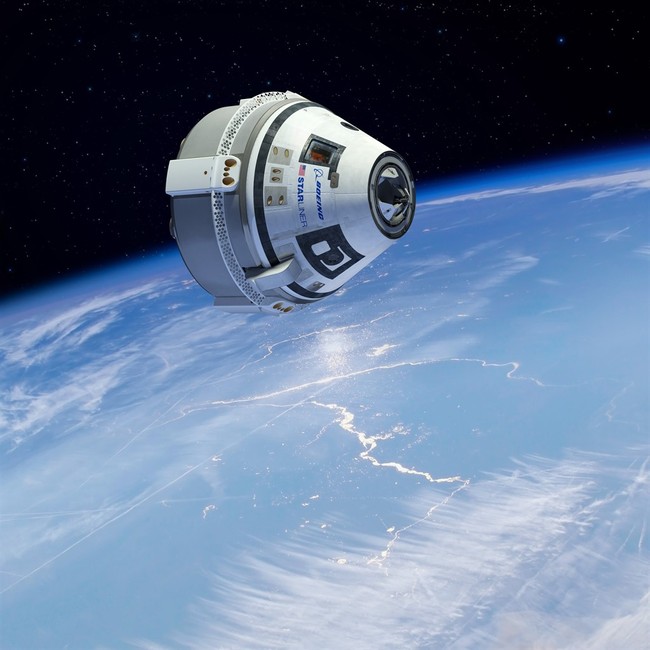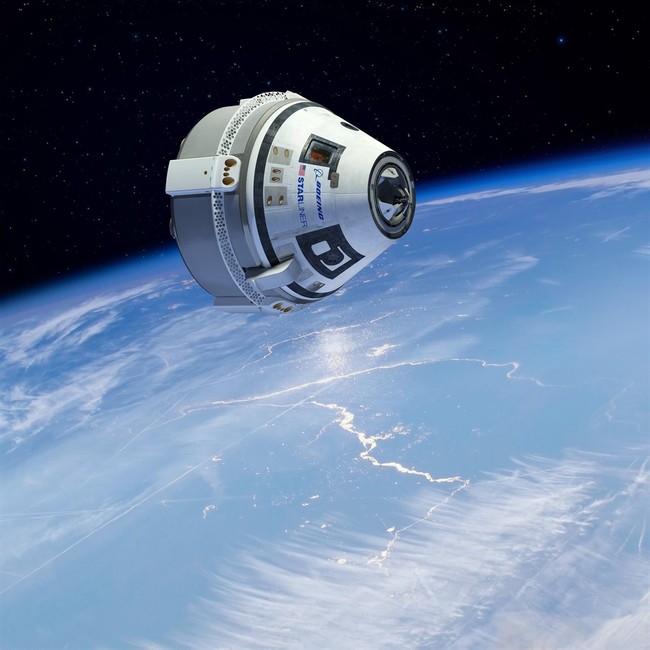From PJMedia.com

Houston, Starliner has a problem. Another one. Four, actually — four failed maneuvering thrusters. After Wednesday’s oft-delayed but finally successful crewed flight test (CFT), Boeing’s orbital spacecraft suffered multiple thruster issues on its way to dock with the International Space Station.
Advertisement
Spoiler: Starliner and its crew — mission commander Barry Wilmore and pilot Suni Williams — eventually safely docked with ISS.
Best as we know so far, here’s what happened.
The second attempt at launching CFT was scrubbed when a small helium leak was found in one of the service module’s 28 maneuvering thrusters. Engineers had to decide whether they could “get comfortable” with the leak or whether they would have to perform a complicated, expensive, and lengthy repair. Readers here — some with long aerospace experience — told me they figured it was nothing more serious than a faulty seal and might not be a big deal.
During the investigation into the helium leak, engineers discovered a design flaw in the propulsion system, subcontracted by Boeing to Aerojet Rocketdyne. Should a very unlikely series of failures occur (estimated at 0.77%), Starliner’s deorbit burn would fail to ignite on its way back to Earth at the end of its weeklong stay at ISS. NASA and Boeing said last week that they’d developed a workaround so that even if the unlikely series of failures all happened, Wilmore and Williams would still get their deorbit burn.
Stick a pin in that because I’ll come back to it in a moment.
The launch went nominally on Wednesday, with the Atlas V rocket putting Starliner into its planned sub-orbital trajectory. After separation, Starliner’s thrusters properly fired to bring it into orbit and ready to close in for docking with the ISS today.
Advertisement
Here’s where things get murky.
Recommended: The Massive Starship That Could
That docking was originally scheduled for 12:15 p.m. Eastern time, or a little more than two hours before I’m writing this sentence. However, four maneuvering thrusters failed and the docking was scrubbed. The second docking availability was at 1:33 p.m. but in the meantime, Spaceflight Now reported, Starliner did “not have permission to enter the so-called ‘keep out sphere’ around the space station while flight controllers continue to evaluate the troublesome maneuvering thrusters.”
Engineers on the ground were able to get two of the thrusters working again, and needless to say, that was enough. Starliner completed docking at 1:34 p.m. — just one minute late although, granted, on the second attempt after some hairraising issues.
Starliner docking confirmed!
The #Starliner crewed spacecraft docked to the @Space_Station at 1:34pm ET with @NASA_Astronauts Butch Wilmore and Suni Williams. pic.twitter.com/rTzuUHdABm
— NASA’s Johnson Space Center (@NASA_Johnson) June 6, 2024
Now that Wilmore and Williams and their ship are all linked up with the ISS, let’s ask some questions about those thruster issues that NASA discovered on the ground last month.
Advertisement
- Did the vacuum of space worsen the leak badly enough to cause the thruster failures?
- Why did three additional thrusters fail, instead of just the leaky one?
- Or were these four all-new failures, and the leaky one is doing nothing worse than still leaking?
- Most importantly, do today’s failures have any bearing on the crew’s ability to come back safely to Earth?
It’s fair to say that the folks at NASA and Boeing are WAY out in front of me on all these questions and more. If I’m Elon Musk, I’m telling my people to get a Dragon Crew prepped to bring Wilmore and Williams home, should the need arise.
Godspeed to a safe return.
This is still a developing story, so please excuse any omissions.
All articles possibly rephrased by InfoArmed.com
